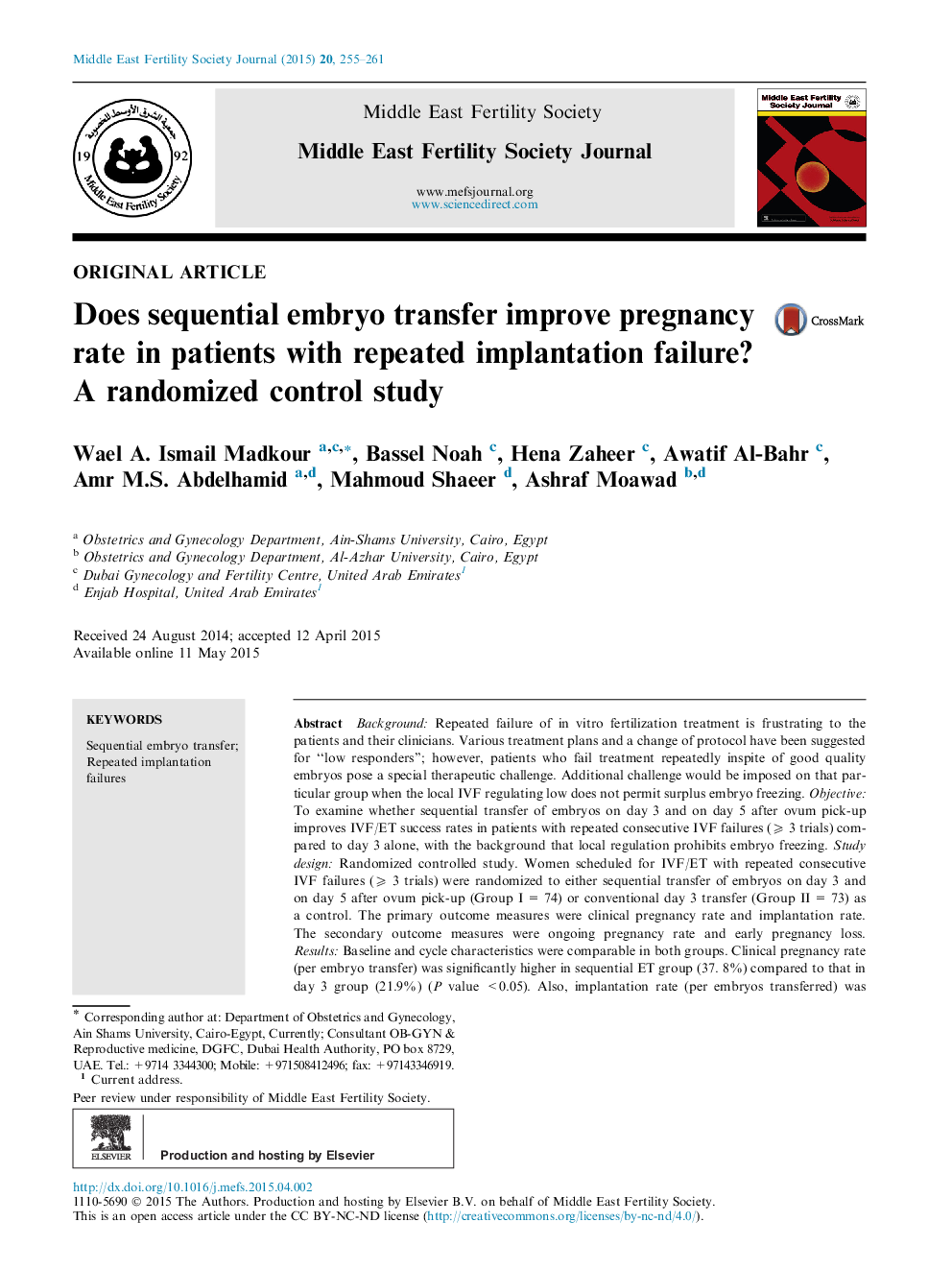| Article ID | Journal | Published Year | Pages | File Type |
|---|---|---|---|---|
| 3966085 | Middle East Fertility Society Journal | 2015 | 7 Pages |
Background: Repeated failure of in vitro fertilization treatment is frustrating to the patients and their clinicians. Various treatment plans and a change of protocol have been suggested for “low responders”; however, patients who fail treatment repeatedly inspite of good quality embryos pose a special therapeutic challenge. Additional challenge would be imposed on that particular group when the local IVF regulating low does not permit surplus embryo freezing. Objective: To examine whether sequential transfer of embryos on day 3 and on day 5 after ovum pick-up improves IVF/ET success rates in patients with repeated consecutive IVF failures (⩾ 3 trials) compared to day 3 alone, with the background that local regulation prohibits embryo freezing. Study design: Randomized controlled study. Women scheduled for IVF/ET with repeated consecutive IVF failures (⩾ 3 trials) were randomized to either sequential transfer of embryos on day 3 and on day 5 after ovum pick-up (Group I = 74) or conventional day 3 transfer (Group II = 73) as a control. The primary outcome measures were clinical pregnancy rate and implantation rate. The secondary outcome measures were ongoing pregnancy rate and early pregnancy loss. Results: Baseline and cycle characteristics were comparable in both groups. Clinical pregnancy rate (per embryo transfer) was significantly higher in sequential ET group (37. 8%) compared to that in day 3 group (21.9%) (P value <0.05). Also, implantation rate (per embryos transferred) was significantly higher in sequential ET group (17.1%) compared to that in control group (10.5%) (P value <0.01). Similarly, ongoing pregnancy (per embryo transfer) was significantly higher in sequential ET group (33. 8%) compared to that in day 3 group (19.2%) (P value <0.05). Conclusions: Patients with repeated implantation failures, treatment with the sequential embryo transfer approach had significantly improved pregnancy outcomes compared to regular day 3 transfers. This approach would be particularly useful when neither oocyte freezing is a clinical option due to insufficient number of collected oocytes nor surplus embryo freezing is an option as the current local regulatory law prohibits it.
